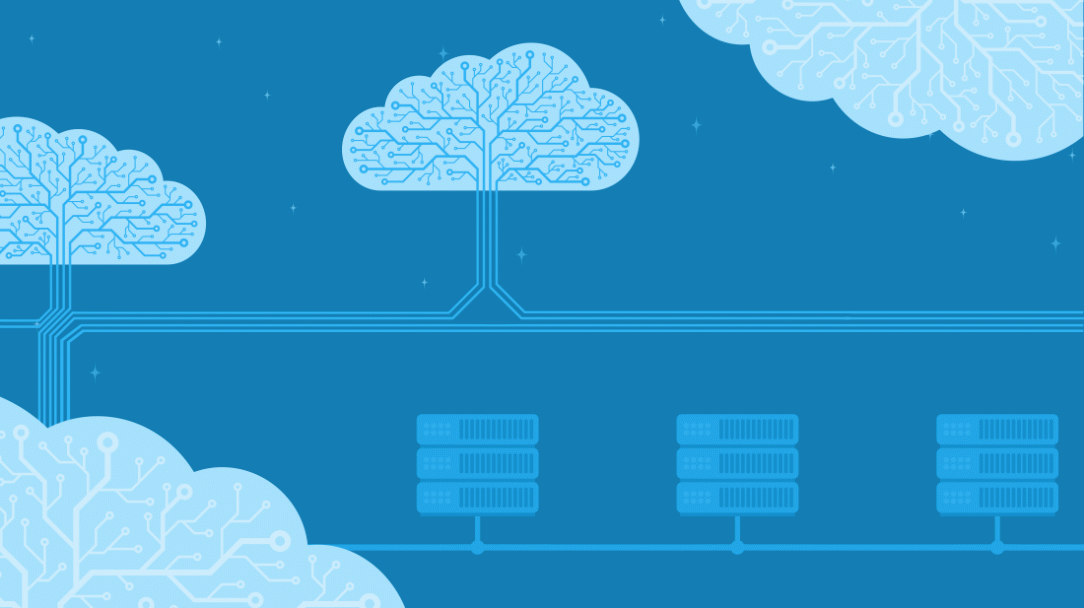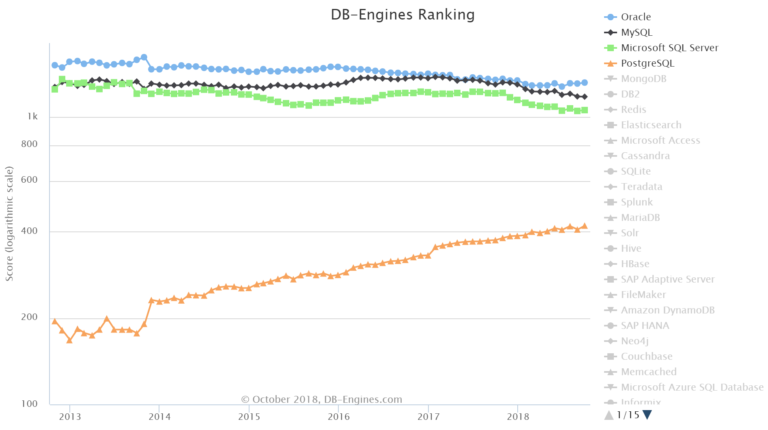
An IT trends report has revealed that in one year alone more than 90 percent of organizations in the United States migrated critical infrastructure and applications to the cloud.

DB-Engines Ranking - until 2018.
The report also detailed how many of these organizations are benefiting from cloud computing capabilities such as availability and scalability. However, it also noted that the resulting hybrid environment introduces new challenges that organizations need to tackle.
Organizations have reported that the number one challenge presented by the advent of hybrid IT is increasingly complex infrastructure. This is accompanied by the lack of visibility into and control over the performance of different cloud-based applications.
Common Challenges Faced by Cloud Databases
It is becoming increasingly comfortable for organizations to run their workloads in the cloud. Many organizations are opting for a Database as a Service (DBaaS) model. However, there are points to be considered before an organization chooses to use DBaaS.
Size Limitations
The key question here is: Does your organization have plans to scale to a level beyond the capacity of DBaaS instances? Azure cloud databases and AWS DBaaS don’t offer the scalability of unlimited database storage. This can be limiting as databases at an enterprise level need to be able to expand with time. Thus for many enterprises, extendable storage is a requirement.
There are some ways to overcome these storage limits. Cloud Volumes ensures that a database will receive unlimited storage, giving databases the room they need to grow.
Data Protection in the Cloud
Some organizations may be concerned about the security of cloud services. However, an organization can play a role in ensuring that their cloud services are reliable. Data in the cloud is typically protected with point-in-time snapshot copies of a database. In addition, the in-built high availability ensures that users don't miss the strict RPO=0, RTO<60-second objectives.
Most of the cloud protection depends on how you’ve set it up and the type of the database that you’re running. For instance, the PostgreSQL community recommends that you run two instances of your database and an arbitrator instance for high availability. This way you can manage your PostgreSQL database even if one of them goes out.
Storage Performance
Performance is another aspect organizations should consider when running cloud databases. When it comes to DBaaS, the cloud service provider deals with a large part of the foundational infrastructure responsibilities. However, what needs to be defined is the type of storage performance your organization requires.
In the case of the public cloud, the performance of the storage layer is linked to its capacity. Typically, users need to either over-provision capacity or to choose a more expensive provisioned performance storage option to get the required performance from a database. Additionally, performance spikes may require an increased storage capacity for a DBaaS, which can increase costs.
Database Cloning
Though cloning a database is relatively quick, its speed and agility can influence the cost.
As a general rule, DBaaS cloning of cloud databases means that you double the capacity of the database. If multiple clones are created you can extend the capacity of the database even further. As with most rules, there are exceptions. In RDS Fast Database Cloning (ex – AWS RDS Aurora), the cloned database points to the source database. Therefore, no copying of data takes place.
Changes and writes are transferred to the pages of the new database and don’t impact the source database. This saves costs and ensures quick access to database clones. However, currently, users are limited to a maximum of 15 clones for both PostgreSQL or MySQL databases.
Lift and Shift
For organizations that are looking to transfer workloads to the cloud, one of the initial challenges they tend to face is how to run their new cloud-based workloads. Should they use a specialized database? Does their existing database fit a standard DBaaS model? How prepared are their staff to handle this move?
The advantage of sticking with a traditional form of database deployment is that a number of these concerns don’t exist. Organizations can simply continue processing in the cloud.
Hybrid Cloud and Multi-Cloud Operations
Still another challenge is how to facilitate hybrid cloud and multi-cloud operations across an organization's on-premise data centers, or across diverse public cloud service providers. Public cloud DBaaS can be extremely powerful; however, they are not always directly compatible. This means the migration of database workloads to, from or through the clouds can require a more complicated setup.
Out of all the infrastructure and applications being migrated to the cloud, database garners are of particular interest. Applications are at the core of the contemporary business, and databases are at the center of every application. Therefore, the process of database migration to the cloud can often present more obstacles than expected.
Defensible Backup and Recovery
Even with the most detailed planning, things can and do go sideways when least expected. A majority of organizations are aware of the importance of a failsafe backup process and have also implemented various backup and recovery processes.
Most companies recognize the importance of proper backup hygiene today and have implemented backup as well as recovery processes. Organizations need to periodically ensure that the ability to restore the backups and recover their operations are working as intended.
When it comes to the cloud, there is another point to carefully consider. Organizations should not end up putting all their data eggs in one basket. It is never a good idea for organizations to store backups within the same cloud account used by production data. Organizations may not be able to recover if an attacker gains access to their network and deletes or modifies data.
It is beneficial to utilize more than one cloud account to segregate backup data from the production data. Ensure that information related to cloud infrastructure configuration is backed up as well in case organizations need to rebuild from scratch for any reason.
If the production environment is compromised, it is of utmost importance that copies of backups and cloud configurations are stored in a manner that prevents tampering or deletion. One way to do this is by creating a different backup account, either on the same cloud service provider or a different one and utilize a ‘write only' policy that does not allow data to be deleted. This helps protect business and ensures that data recovery systems and backed up data is always available when needed.
Conclusion
The crafting of a plan to cover data access, transit, arrival, and storage, along with a proper data backup and recovery strategy is a foundation that will bear the load of an organization's data management approach and inhibit data leaks. It is essential for organizations to ensure that they can recover rapidly from commonly faced problems that arise from operations hosted in cloud environments.
Every organization should have the best possible employees and products, however, without data hygiene and data security, organizations are left powerless. Therefore, taking steps to ensure secure and free data flow, along with smart data management, will enable an organization's staff to utilize the latest available cloud technologies and deliver innovative products and services to lift the organization above its competition.


